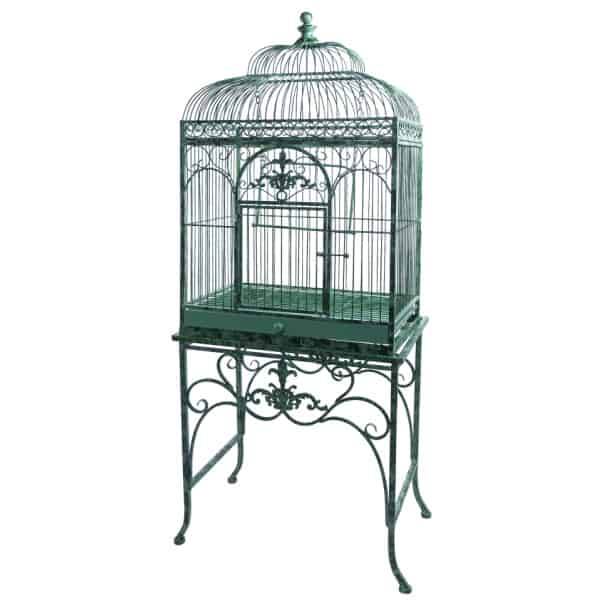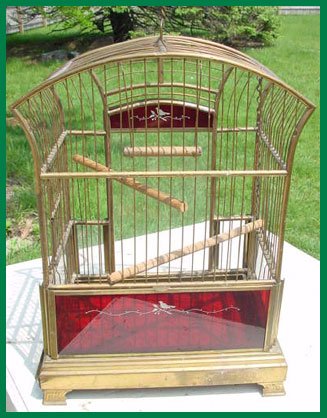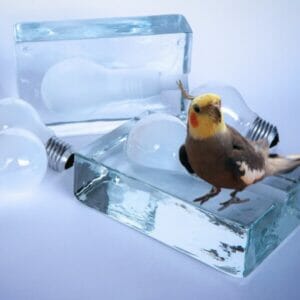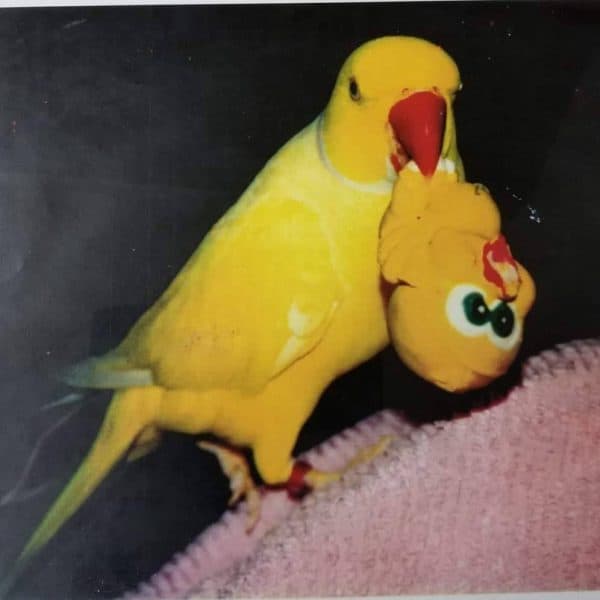Last Updated on by Catherine Tobsing
Oriental-style cages were popular during the Deco period, from the 1920s until the 1940s. One example, probably manufactured by Hendryx, was a round, hanging pagoda-style birdcage with a brass-wire seed screen and side-out tray (above).
The bottom was fastened to the top part of the cage with small, attached brass clips. On some models from this era, the clips were adorned with small owls or little figures of Asian men.
The stands for some of these cages echoed the shape of the cage. Hendryx, was a round, hanging pagoda-style cage with a brass-wire seed screen and side-out tray., incorporating cut glass and perforated metal inserts into the designs.
Canaries were popular pets during this period, and around 1929-1930, Hartz Mountain produced small, wood-carrying cages labeled with the company name. A newer metal version later appeared.
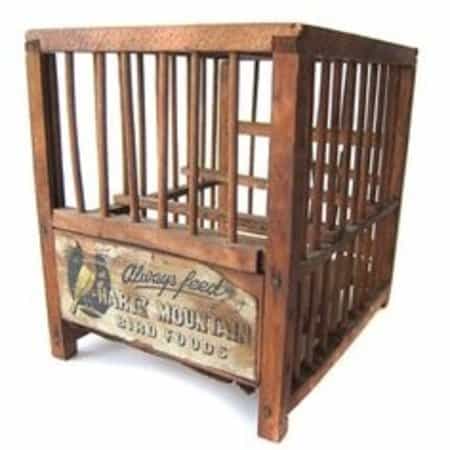
(similar to the Hartz mountain canary carrier)
The American Radio Warblers, billed as canary songsters, were featured on live radio broadcasts during this era. The birds sang along with background music, and some of the recordings still exist on 78-RPM records (check Internet auction sites, or do a search for American Radio Warblers), which were marketed for human enjoyment and as training aids for canaries.
3 Vees, a seed, grit and egg food company, manufactured a small cage for the Radio Warblers, and it is highly collectible today. Collectors also seek food containers (called advertising tins in the collectibles trade), feeders, magazines, books and other avian accessories from this period.
The Atomic Age (1945-1952) revolutionized Cages fabricated entirely of plastic, plastic seed-guards and decorative touches began to appear on mass-produced bird homes.
Cage styles began to evolve to reflect the new modern world and America’s love affair with the budgie. The chrome or brass finish Hendryx hatbox cage sported a circular design and featured a unique slide-up cage tray that works something like a breadbox lid.
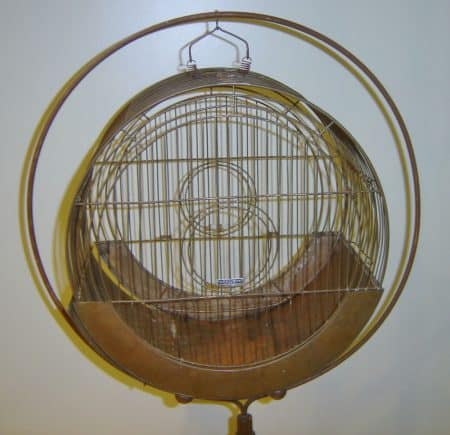
Look for these at yard sales. People are emptying the 50s attics now, advised Greg Cristiano, a retired auto executive and former pet shop owner.
A Made in Occupied Japan label or stamping indicates that an item was fabricated in Japan during the American occupation (1945-1952) following World War II. Cages, toy cages and cage accessories made in Japan during this short period in history are quite collectible.
Molded plastic cage tops and bottoms in colors popular during the 1960s (harvest gold, avocado, etc.) began to appear in pet and variety stores. Canaries, finches and budgies were the species most commonly kept as pets, and large parrot cages were not yet readily available.
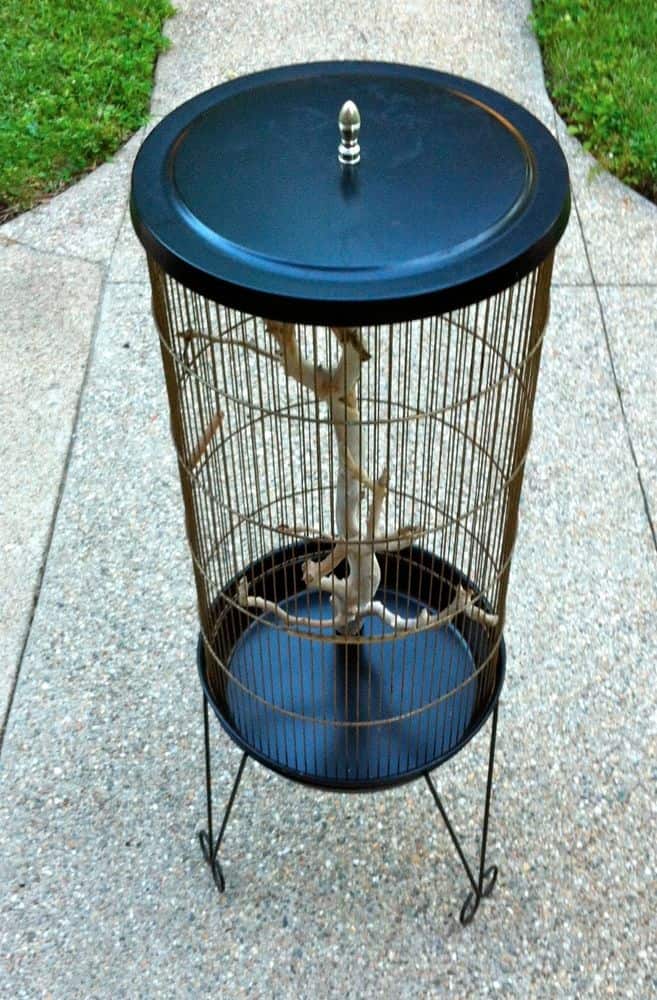
When the exotic bird hobby began to escalate in the 1970s and 80s, the demand for practical, yet attractive parrot, cockatiel and macaw cages inspired new designer and large-scale production of cages for these birds.
The availability of tame, hand-reared hookbills spurred more people to obtain birds as pets and, by the 90s, rudimentary parrot cage had evolved into large, sleek, easy-to-care-for bird homes. Wrought iron gave way to cold-rolled steel and stainless steel.
Casters appeared on large cages for ease of movement. Feeder designs improved, and mess management systems are still being perfected. Your bird may be living in tomorrow’s collectible.
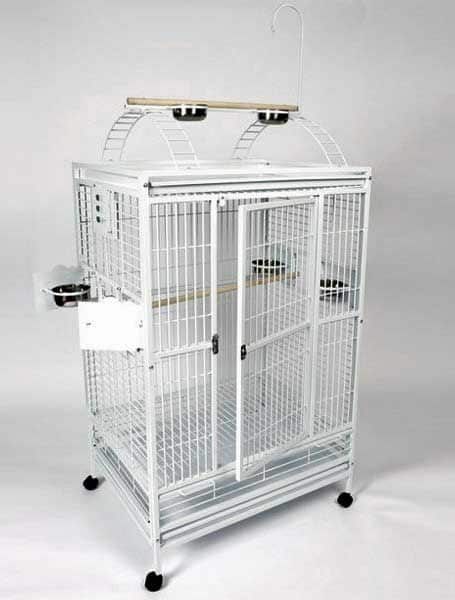
Cristiano has been in the antique cage business for about four years but has been a memorabilia buff since he began collecting coins as a child.
Now he’s a fixture at antiques shows and events around Long Island, NY, and his business, North Fork Pets and Antiques, is getting buzz as the place to look for antique and vintage bird cages and pet and veterinary collectibles.
I had a pair of canaries, and my fiance remarked that I had lovely antiques and suggested I look around for cages and avian memorabilia.
Soon after, I saw an Art Deco cage, which I obtained at a low price, and then I began studying the styles and artistry of bird cages. The concept I’d had from working in the pet shop “A cage is just a cage” quickly changed to “A cage is an art form”.
Find a pictorial history of bird food here
I learned about Art Noveau, Art Deco, the Arts and Crafts movement, rustics and more. Cages became sculpture to me.
The cages from Enlightenment Period in the 1600s and 1700s looked like something I’d like to live in myself. The cages from Middle Europe, Flanders, Holland and Austria were very architectural, even castle-like.
A longtime history aficionado, Cristiano was unable to locate anyone who had made the study of antique cages a serious avocation. There was no centralized source to consult for information on vintage and antique cages.
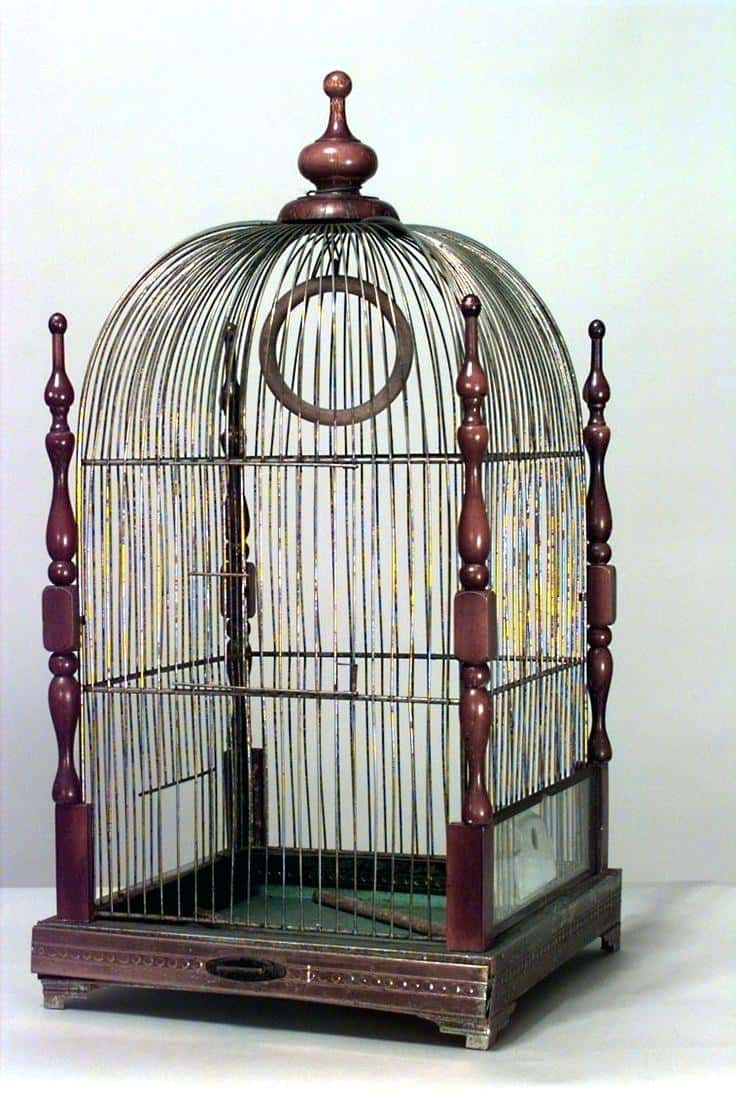
The best way to do it, he deduced, was to go through old catalogs and books. So, Cristiano bought an old pet supply catalog dating back to the 1800s (his oldest is circa 1820) and parrot care books dating from around 1800. “I had a limited budget and limited time. I went online to do more research, and now museums call me for help in dating pieces.”
One of the museums that called upon Cristiano for assistance is the McKissick Museum at the University of South Carolina in Columbia.
The museum is planning an exhibit called Pets in America, which will open in September 2005. Beginning in early 2006 and continuing through 2007, the exhibit will travel to sites throughout the United States. The first stop will be at the Public Museum of Grand Rapids, Michigan.
According to Executive Director Lynn Robertson, vintage cages and bird supplies will be on exhibit, and presentations will include talks on the history of birdkeeping. For information contact: the Kissick Museum at (803) 777-7251, or visit www.cla.sc.edu/MCKS for periodic updates.
Some of Cristiano’s cages end up back where they began. Someone at the Hartz Mountain Group in an Internet search on old products and learned of a rare Hartz Mountain cage in Cristiano’s possession. The company purchased the cage, and it’s now on display in its corporate offices.
Up and Coming Classics
According to Cristiano, The 50s are hot. Atomic age stuff and cages produced when parakeets (budgies) came into popular culture and may be still available at garage sales. You’ll notice that cages became a little plainer after WWII.
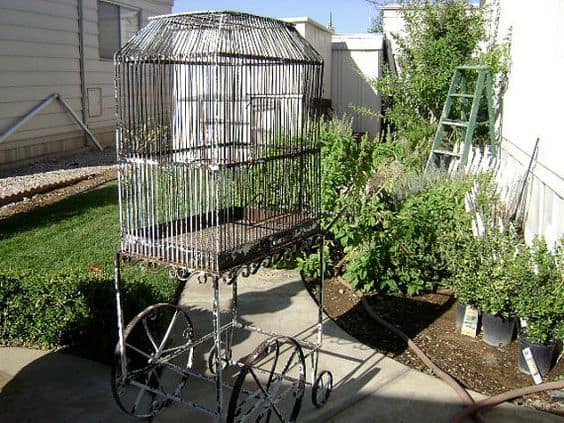
They’re out there, and many are still usable and reasonably priced. Grandma’s attic has some good selections too! Check the bottom tray on any cage you may be considering; bird droppings may have burned holes through the metal.
I was quite taken with the translucent plastic Atomic Age (1945-1954) cage in Cristiano’s collection. The shape is evocative of a vintage radio.
Fabricated of a plastic, pre-acrylic material, the cage was found in an antique shop in Bellport, New York. Kandace Westhoff located her smaller version on an Internet auction site.
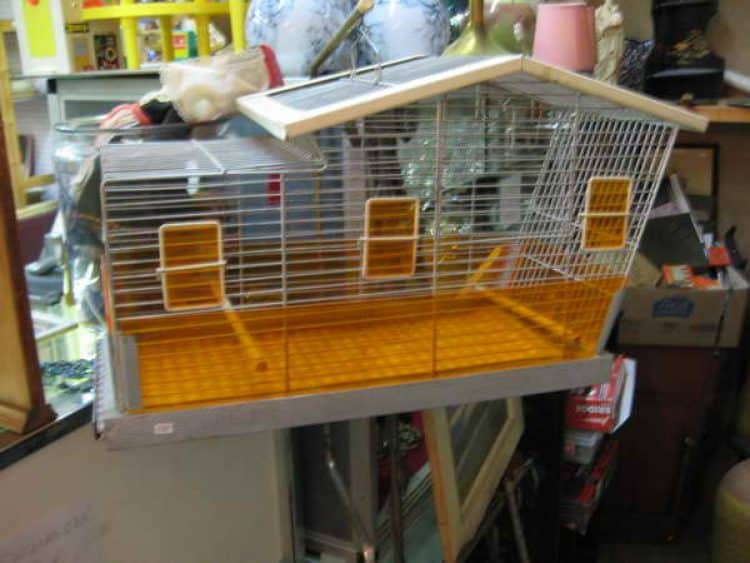
Cristiano says people love this model. I’ve seen it in two sizes and three colors: clear, green and orange. They’re very fragile; light exposure makes the plastic even more brittle and may cause discoloration.
The process is called solarizing. Cristiano advises: If you’re lucky enough to have one of these cages, keep it out of direct sunlight.
Although the decorative designs on the plastic are quite intricate, there are no identifying marks or manufacturer’s names on the plastic cages.
He explained that at the time, many people in rural America shopped through catalogs, thus purchasing non-branded items. Many cages were also stamped at local stores. Even some hardware stores put their own names on the cages they offered.

Author Profile

Latest entries
 Bird BehaviorJune 6, 2025How Do I Keep My Parrot From Dumping His Food Every Day?
Bird BehaviorJune 6, 2025How Do I Keep My Parrot From Dumping His Food Every Day? Birds & LightingMay 16, 2025I Am Seeking Clarity About Lighting for My Birds Cage
Birds & LightingMay 16, 2025I Am Seeking Clarity About Lighting for My Birds Cage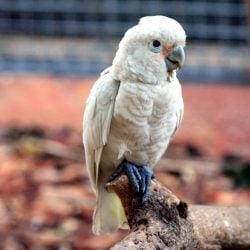 Bird RescueApril 29, 2025How Do We Re-Home a 17 yr Goffin Cockatoo?
Bird RescueApril 29, 2025How Do We Re-Home a 17 yr Goffin Cockatoo?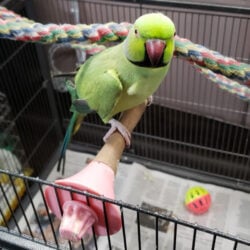 The Traveling BirdApril 17, 2025For Flying Should My Pet Bird Be in the Cabin or the Cargo Hold?
The Traveling BirdApril 17, 2025For Flying Should My Pet Bird Be in the Cabin or the Cargo Hold?
